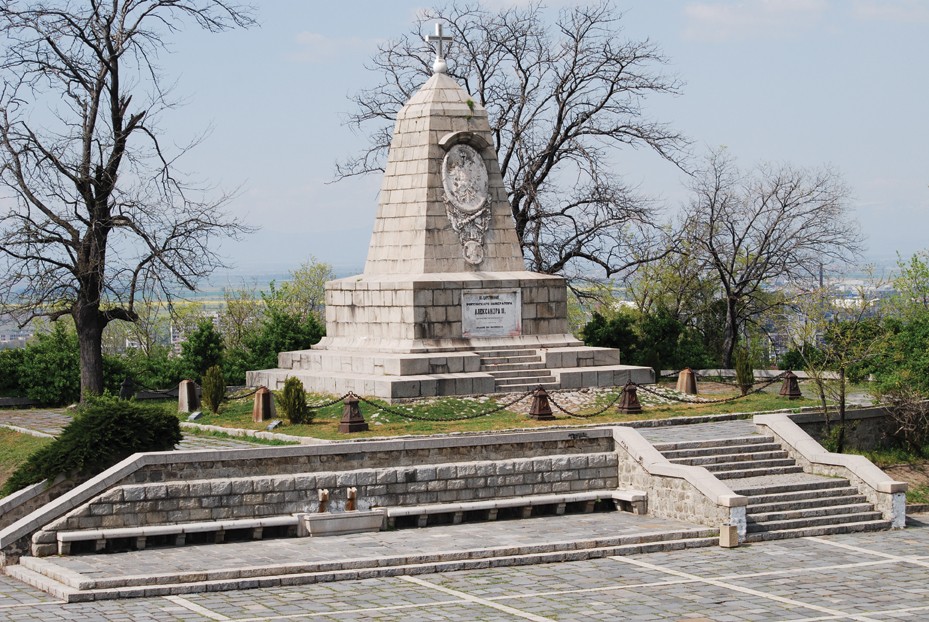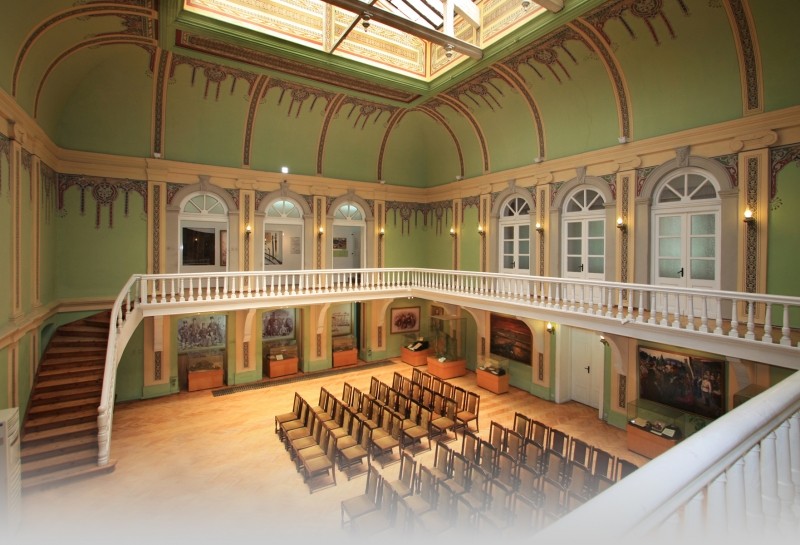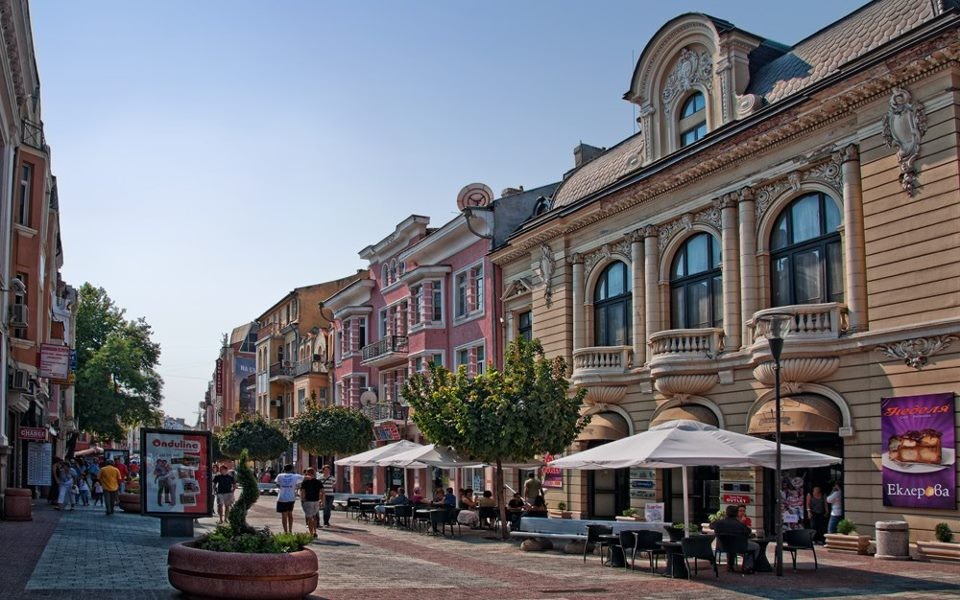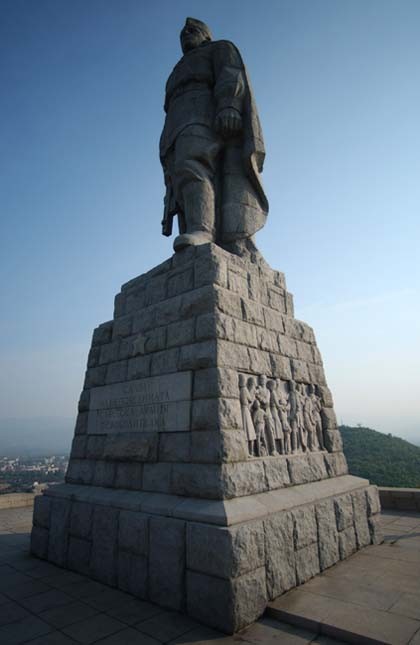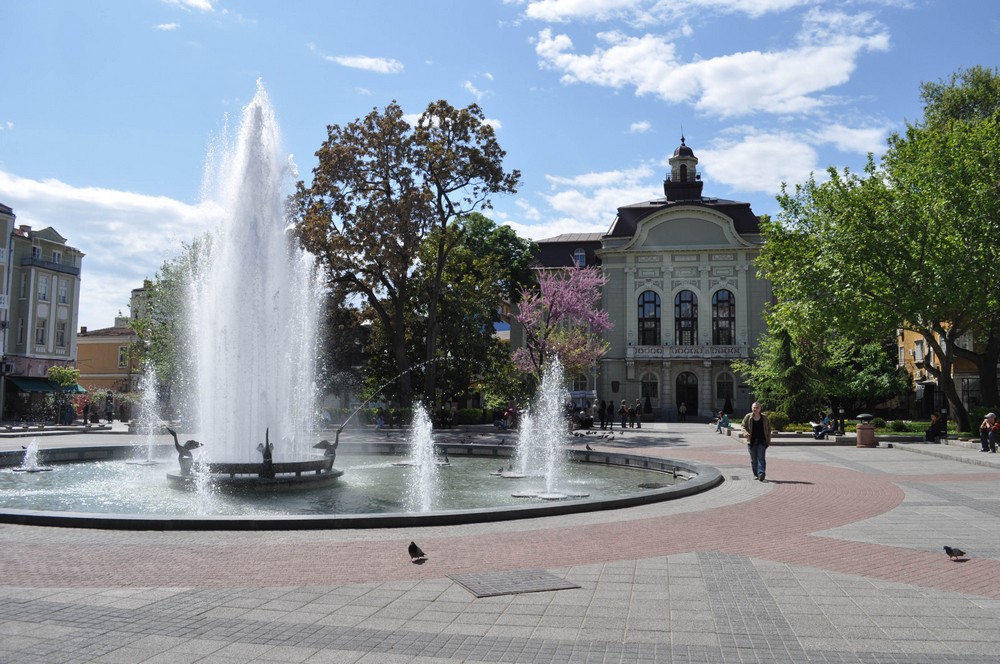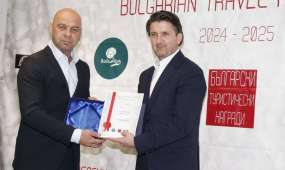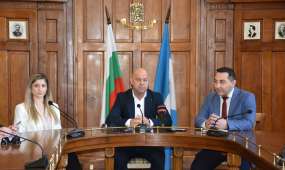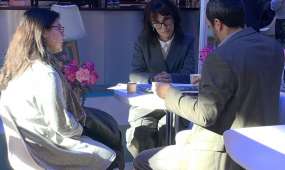New history
Eastern Rumelia and the Unification
Following the signing of the peace treaty in San Stefano Plovdiv was the undisputed capital of Bulgaria of San Stefano and the Provisional Russian government headed by Prince Dondukov-Korsakov established was there.
The Congress of Berlin on July 1, however, divided the Bulgarian lands.
The Plovdiv region remained within Eastern Rumelia – a separate area under the direct political and military power of the Sultan under administrative autonomy. Plovdiv was capital of the area where the District Assembly sat and residence of the General-Governor (Regional governor), elected by the Sultan for a period of five years. Prince Alexander Bogoridi (Aleko Pasha) was elected first Governor of Rumelia. Bulgarians’ struggle for construction of the region as a second Bulgarian state began. There was an agrarian revolution and the land passed into the hands of small Bulgarian farmers, which had cultivated it before.
The first agricultural school with a huge contribution to the development of agriculture in the country was established in Sadovo.
Within a few years, brigandage was liquidated, civil services and local government were organized. The preparation of settlements development plans and construction of new roads began. During his visit in Plovdiv in 1882, when he saw the new buildings of the Men’s and Women’s High Schools under construction, Emile de Laveleye exclaimed: “Here, the Head of State is satisfied with an old house, which is rather a wreck, and the two new large buildings are designed for the higher education of boys and girls. One would think that one’s in the United States.” These buildings were designed by European architects – the Italian, Pietro Montana and the Czech, Josef Shniter. The Swiss, Lucien Cheval, took over the creation of the city gardens. Eastern Rumelia captivated with its free spirit. Plovdiv was again a national and spiritual center of Bulgarian lands.
The first Bulgarian professional theater, library and museum were created in the city. Here worked and composed Ivan Vazov, Zahari Stoyanov, Konstantin Velichkov, Dr. Stoyan Chomakov, Ivan Evst. Geshov, Mihail Madzharov, Stefan Bobchev, Petko Karavelov, Petko R. Slaveykov. The construction of an industry began. In 1878 Hristo G. Danov established the first printing house in liberated Bulgaria. It employed thirty Czech masters. A year later another printing house was set up by Dragan Manchov.
In 1882 the Italian family Beaumont opened a distillery in Plovdiv, and the Swiss Frick and Sultser – a Kamenica brewery.
But the main goal of Bulgarians living in the south of the Balkan remained the struggle for unification, whose center became Plovdiv. It was here where in 1878 the organizing of gymnastic rifle associations and the Unity committees began.
On February 10, 1885, a group of revolutionaries set up in Plovdiv a secret committee with Chairman Zahary Stoyanov to fight for the liberation of Macedonia. In April, it was named Bulgarian Secret Central Revolutionary Committee (BSCRC) and its activities were directed at solving the problem of the Principality of Bulgaria and Eastern Rumelia unification. In the following months the Borba newspaper showed that the unification was close to every Bulgarian heart. Gradually, officers from the Plovdiv garrison, leaders of the Liberal Party, led by Dr. Georgi Stranski, Macedonian associations in the Principality and Prince Alexander I were all drawn to the cause. Many villages around Plovdiv organized their Unification Committees. The Unification of the Principality of Bulgaria and Eastern Rumelia was announced in Plovdiv on September 6, 1885 with the efforts of the people’s detachments from Golyamo Konare (today Saedinenie), Asenovgrad and Plovdiv, and the garrison troops of Plovdiv under the command of Major Danail Nikolaev.
In free Bulgaria
After the Unification Plovdiv was no longer capital, its district became the primary administrative district of united Bulgaria. Highest Representative of the state power was the District Governor, assisted in his activities by an elections council with its permanent committee. The efforts were now focused on the path of modernization and economic prosperity.
Plovdiv became the center of the new tobacco industry. It was Magardich Tomasyan who first replaced manual tobacco cutting with a machine, driven by petrol engine. This was followed by the factories: Stamatov’s Zheleznitsa /Railway/, Nikola Libenov’s Slantse /Sun/ of, Stavridis and Mardas’s Orel /Eagle/. That led to the largest industrial district in the country with more than 30 warehouses and five tobacco factories in the ‘20s and ‘30s of XX century.
More than half of the exports of tobacco products were now out of Plovdiv.
Economic bloom
From 15 August to 30 October 1892 the city hosted the First Bulgarian Agricultural and Industrial Exhibition and the First Agricultural and Industrial Fair. In the decisions of the council was formulated the new economic policy of the Bulgarian state. For nine months Lucien Cheval created a beautiful garden of 80 acres, where more than 20 Bulgarian and foreign pavilions were located. The path for the future economic progress of the country was paved during these months in Plovdiv. Europe discovered a new economic Bulgaria for the first time, but it was also a demonstration of the European plows and planters, water turbines, steam lokomobiles, metal lathes and more.
The exhibition had an extraordinary impact on the industry in the city. In 1893, Hristo Syarov opened the first factory in Plovdiv for toilet soaps. Stefan Obreykov created the May factory for ink and learning aids. In 1895, Anton Papazov founded the first Bulgarian company for perfumery. In 1897, Pavel Kalpakchiev created the largest factory for bricks and tiles in Southern Bulgaria. In 1909, Pantaley Genov established “The First Privileged Bulgarian Cans Factory” with brand name The Beautiful Gardener.
The factory of Bulgarian Sugar Company was established through a concession in 1914.
Combat feats
The wars for national unification in XX century interrupted the normal development of the city.
The parts of the 9th Plovdiv Regiment, 21st Infantry Sredna Gora Regiment and the other wartime divisions united in the Second Thracian Infantry Division in the composition of the Second Bulgarian Army during the Balkan Wars and the First World War mark glorious times in military history – the defense of Rhodope’s Shipka by 21st Infantry Regiment under the command of Colonel Vladimir Seraphimov in 1912, the conquest of the Edirne fortress from the Second Bulgarian army in 1913, the defense of the Doiran position and the battles at the Bend of the Black River in the First World War.
National catastrophes – a result from politicians’ actions, however affected the city’s socio-economic development. In 1913, the majority of Bulgarians who had been ridden away from the impoverished villages in eastern Thrace and Aegean Macedonia arrived here. In the killings of Bulgarians in Thrace in 1919-1924, majority of the refugees also headed to Plovdiv region.
In Plovdiv, they created new neighborhoods – Kyuchuk Paris, Borislav, Hristo Botev, Belomorski, Saraykar, and others.
Coups and uprisings
The postwar crisis radicalized society. Plovdiv was characterized by “anti-friendly sentiments” and controversies of the traditional bourgeois parties and the communists. The political upheavals of 1923 – a violent overthrow of the government of Alexander Stamboliyski, the June Uprising, the September Uprising organized by the Bulgarian Communist Party under the pressure of the Comintern, its cruel suppression by the, divided the society and predicted decades of bloodshed.
Plovdiv began to live with the new realities in the coming years, albeit slowly. A new image of the city was created – with electricity, water supply, sewerage and separate industrial zones.
In the main street of the city, Knyaz Alexander I, an architectural ensemble of buildings in the neoclassical style, baroque and art nouveau was formed, which is still one of the city landmarks. The rail connections Plovdiv-Asenovgrad-Peshtera-Panagiurishte-Karlovo were constructed.
In 1928 the House of Charities and Public Health Dimitar Kudoglu was opened – the first public health facility in the country for free treatment of the poor of socially important diseases – tuberculosis, children and venereal diseases. The remarkable Thracian Bulgarian Dimitar Kudoglu donated facilities and over 40 million Bulgarian lev for its creation and maintenance for 15 years.
New metal processing enterprises emerged. Balkan factory for stoves and metal goods and the First Bulgarian factory for the production of screws in Plovdiv became some of the symbols of the new Bulgarian industry. The area emerged as one of the centers of textile industry. There was a rapid development in the agriculture as well.
Plovdiv was already 1/5 involved in the commercial balance of the country. Plovdiv airport opened on August 18, 1932.
The International Sample Fair in Plovdiv was established in the ‘30s.
The rescue of the Jews
World War II remains in the annals of the city also for the rescue of Bulgarian Jews.
On March 9, 1943, their deportation to Germany camps began. In Plovdiv, 1500 Jews were arrested but the public of the city immediately proclaimed in their defense. Metropolitan Kiril sent a telegram to Tsar Boris III and went to the detained Jews, where he pronounced the memorable words: “Return to your homes. None of you will be taken from Plovdiv. If I have to, I’ll lay down on the railway line in front of the train carrying Jews.” The Vice-President of the National Assembly, Dimitar Peshev, the people of Sofia, Kyustendil and other cities also participated in the rescue. On 10 March, a telegram was received asking for the release of the Jews detained throughout the country.
In Soviet orbit
The fate of the city in the years after World War II was controversial. A fierce political retribution began after September 9, 1944. Without trial and verdict hundreds were shot, others disappeared. The meetings of the People’s Court in Plovdiv started in January 1945 against 1312 defendants, of which 328 were sentenced to death, 170 were shot, and 157 were imprisoned for life.
The major political battles of the election in the second half of the ‘40s faced the appearance of respectable cultural elite. The Cultural Committee set up in Plovdiv worked not only for the city but for the area. On July 5, 1945 Plovdiv already had its own symphony orchestra and from January 1, 1946 – a State School of Music. On August 5, 1945, the first university outside the capital was founded with two faculties in Plovdiv. The Plovdiv Drama Theatre was established. In 1948 was created the State Puppet Theatre, in 1949 – the Regional radio station and in 1953 – Plovdiv Opera.
On November 1, 1947, in Plovdiv was opened another 9th, but now renamed First Republican International Fair. In the following decades new Fairgrounds appeared on the left bank of Maritsa.
The law on nationalization of the private industrial enterprises from December 27, 1947 marked the beginning of the nationalization of the industry and its development in new and controversial way. It could not be denied that in the coming decades in Plovdiv were built major facilities of the new industry – the non-ferrous metals smelter, the Record Forklifts Smelter, the Maritza textile plant, the Druzhba glassworks plant, the United plants for storage devices.


